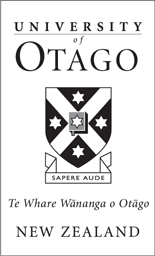Karyn Paringatai (Te Tumu)
In pre-European Māori society much of the education of children occurred informally. They learnt by observing older siblings and elders doing activities and tasks: mimicking what they were doing and asking questions where appropriate. However, there were some forms of knowledge that were singled out as too important for their acquisition to be left to chance and they became subjects of formal study in the whare wānanga (pre-European institutions of learning of esoteric knowledge). Tohunga (knowledgeable experts) were charged with the task of passing esoteric knowledge on to the pupils, who were seen to be gifted with the ability to recall information unaltered, to ensure that its authenticity and antiquity remained intact.
One of the teaching methodologies employed in the whare wānanga involved instruction occurring in total or semi-darkness. Students entered the whare wānanga in the middle of the night when the mind was said to be free of distractions. It was thought that limiting external stimuli and keeping students isolated was more conducive to enhancing the retention skills of the student. Tohunga would often use mnemonic type instruction, for example formulaic verses, melodic chants, genealogical recitations and karakia (prayers), to teach their students.
This presentation will demonstrate how this particular teaching methodology was employed at the University of Otago. It will include the audience being immersed in darkness whilst being taught the lyrics and tune to a simple Māori song. By providing the opportunity for people to learn in this particular environment it will enable them to gain an insight into how this teaching method can extend beyond Māori performing arts and be adaptable to any subject to help enhance the aural receptive skills of students.
References
Best, E. (1976). Maori religion and mythology, Part 1. Wellington: A. R. Shearer, Government Printer.
Best, E. (1982). Maori religion and mythology, Part 2. Wellington: P. D. Hasselberg, Government Printer.
Best, E. (1986). The Maori school of learning. Wellington: V. R. Ward, Government Printer.
Caccioppoli, P., & Cullen, R. (2006). Maori education. Auckland: Kotahi Media Limited.
Hemara, W. (2000). Māori pedagogies: A view from the literature. Wellington: New Zealand Council for Education Research.
Hond, R. (2001). He puna wānanga hirere i te tauira: He aha te hanga o te ihi ki te ingoa ‘whare wānanga’ e mou nei ki ngā kura tuatoru? Master’s thesis, Te Whare Wānanga o Awanuiarangi.
Walker, M. (2006). Higher Education pedagogies: A capabilities approach. Berkshire: Open University Press.
Whatahoro, H. T. (2011). The lore of the Whare-wānanga or Teachings of the Maori College on religion, cosmogony, and history: Part I – Te Kauwae-runga (S. Percy Smith, Trans.). New Plymouth: Thomas Avery. (Original work published 1913)
Whatahoro, H. T. (2011). The lore of the Whare-wānanga or Teachings of the Maori College on their history and migrations, etc.: Part II – Te Kauwae-raro (S. Percy Smith, Trans.). New Plymouth: Thomas

